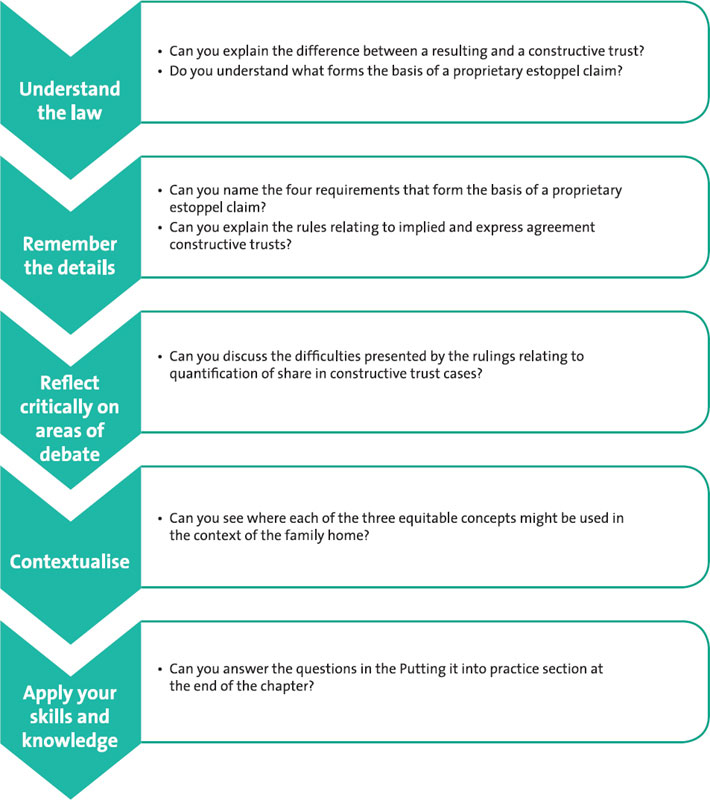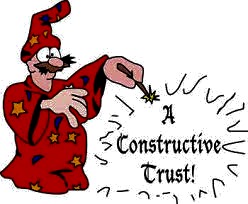The Importance of Knowing What Is A Constructive Trust in Court Cases
The Importance of Knowing What Is A Constructive Trust in Court Cases
Blog Article
Introducing the Benefits of a Positive Count On in Dealing With Recipient Conflicts
The concept of a positive depend on becomes an essential device in the elaborate realm of beneficiary conflicts, providing a nuanced service to disputes that often occur from wrongful home retention. By fostering a fiduciary partnership between events, this equitable remedy not only facilitates swift resolutions but additionally offers to prevent potential misconduct. As we explore the complex benefits of positive depends on, one may begin to examine how these devices can reshape the landscape of estate disagreements and add to a much more fair circulation of properties among recipients.
Meaning of Constructive Trust
A useful trust fund is often developed by courts to attend to situations where one party has wrongfully acquired or preserved property that rightfully belongs to an additional (What Is A Constructive Trust). This legal concept is not a traditional trust, as it does not require the formalities normally related to trust creation, such as a composed agreement or the intention of the events involved. Instead, a useful trust fund emerges by operation of regulation, functioning as an equitable solution to avoid unfair enrichment
The courts impose a constructive count on when it is figured out that a person party holds property under conditions that, in equity and great conscience, need to not permit them to preserve it. Common circumstances include deceptive activities, violations of fiduciary duty, or scenarios where a party has obtained building through incorrect ways. The useful count on thus functions to safeguard the rights of the rightful owner by guaranteeing that the residential or commercial property is held for their benefit.
When established, the useful trust calls for the party in belongings of the home to convey it to the rightful owner, hence correcting the wrongful situation. This system emphasizes the legal system's commitment to justness and justice in residential property conflicts, highlighting the importance of moral conduct in possession and transfer of properties.
Advantages of Positive Trusts
Constructive trusts provide a number of considerable benefits in lawful conflicts entailing residential or commercial property legal rights. Largely, they serve as an equitable treatment, allowing courts to address circumstances where an event has wrongfully gotten or kept property that rightfully comes from one more. This establishes a framework for fairness, making sure that the rightful owner is compensated and the unjustified enrichment of the perpetrator is curtailed.
In addition, constructive trusts can speed up resolution in conflicts over estate properties, consequently lowering the prolonged and often controversial litigation procedures related to standard property disagreements. Their versatility permits courts to customize treatments to fit the specific circumstances of each instance, which can result in more acceptable end results for all parties involved.
Additionally, positive depends on promote openness and accountability amongst beneficiaries and fiduciaries, as they require the last to act in the best rate of interests of the former. This strengthens the stability of fiduciary connections, fostering trust and teamwork. Ultimately, by dissuading misconduct pertaining to home possession, constructive counts on add to the total stability of monetary and legal systems, guaranteeing that property civil liberties are appreciated and upheld within culture.
Just How Positive Trusts Job

In method, when a useful trust fund is imposed, the court determines the home concerned and develops a fiduciary partnership in between the celebrations included. The party that holds the home ends up being a trustee, obligated to handle it for the advantage of the rightful proprietor, called the recipient. This relationship is not based on a formal contract yet instead on the principle of equity, aiming to fix scenarios where one party's gain straight associates with an additional's loss.

Instance Research Studies and Instances
When checking out the sensible application of positive counts on, numerous case research studies illustrate exactly how courts browse intricate circumstances including unjust enrichment. One remarkable instance is * Pettkus v. Becker *, where the High Court of copyright established a positive depend on to correct the unjust enrichment of one celebration over one more in a long-lasting partnership. The court identified that the contributions of one partner to the acquisition of home warranted the imposition of a positive count on, ensuring fair circulation.
An additional significant example is * Gisborne v. Gisborne *, where the court imposed a positive depend on to deal with the cases of brother or sisters over their deceased bro's estate. The court acknowledged the payments made by the siblings in maintaining the household property, bring about a decision that needed the estate to make up those contributions, thus protecting against unjust enrichment.
These instances exemplify exactly how constructive counts on can successfully resolve conflicts by concentrating on justness and the avoidance of unjust enrichment. By taking a look at the particular payments and scenarios of the parties included, courts can use constructive depend accomplish just results, inevitably enhancing the fair principles underpinning these lawful systems.

Steps to Establish a Positive Trust
To establish a useful trust, a number of crucial actions must be followed to make sure that the case is validated and lawfully identified. The claimant needs to show the existence of a fiduciary partnership or a scenario that warrants the imposition of a constructive count on, such as scams, unfair enrichment, or a violation of obligation.
2nd, it is necessary to collect and present engaging evidence that supports the case. This consists of documents and testaments that show additional info the situations causing you can try this out the supposed wrongful retention of building or advantages by the trustee.
Third, the plaintiff must file a petition in the ideal court, verbalizing the grounds for requesting the imposition of a useful trust. This petition needs to describe the specifics of the connection and the unjust enrichment that necessitates the trust fund.
Verdict
In verdict, useful counts on represent a crucial equitable treatment in the realm of beneficiary conflicts, successfully attending to wrongful home retention and stopping unfair enrichment. By developing a fiduciary connection, these trusts improve transparency and liability among property holders. The expedited resolution of estate disputes and the frustration of misbehavior add to greater security within economic and legal systems. Eventually, constructive depends on advertise fairness amongst beneficiaries, making certain that rightful ownership is preserved and shielded.
A constructive count on is often developed by courts to resolve situations where one party has wrongfully acquired or kept property that truly belongs to an additional.The courts enforce a constructive count on when it is figured out that one event holds residential or commercial property under situations that, in equity and excellent conscience, must not allow them to keep it. By preventing misbehavior associated to property ownership, positive trust funds contribute to the total stability of economic and lawful systems, making sure that property legal rights are appreciated and promoted within culture.
In practice, when a useful trust fund is imposed, the court determines the residential property in inquiry Related Site and develops a fiduciary connection between the parties entailed. What Is A Constructive Trust. The court determined that the contributions of one companion to the purchase of residential property validated the imposition of a positive depend on, guaranteeing equitable circulation
Report this page